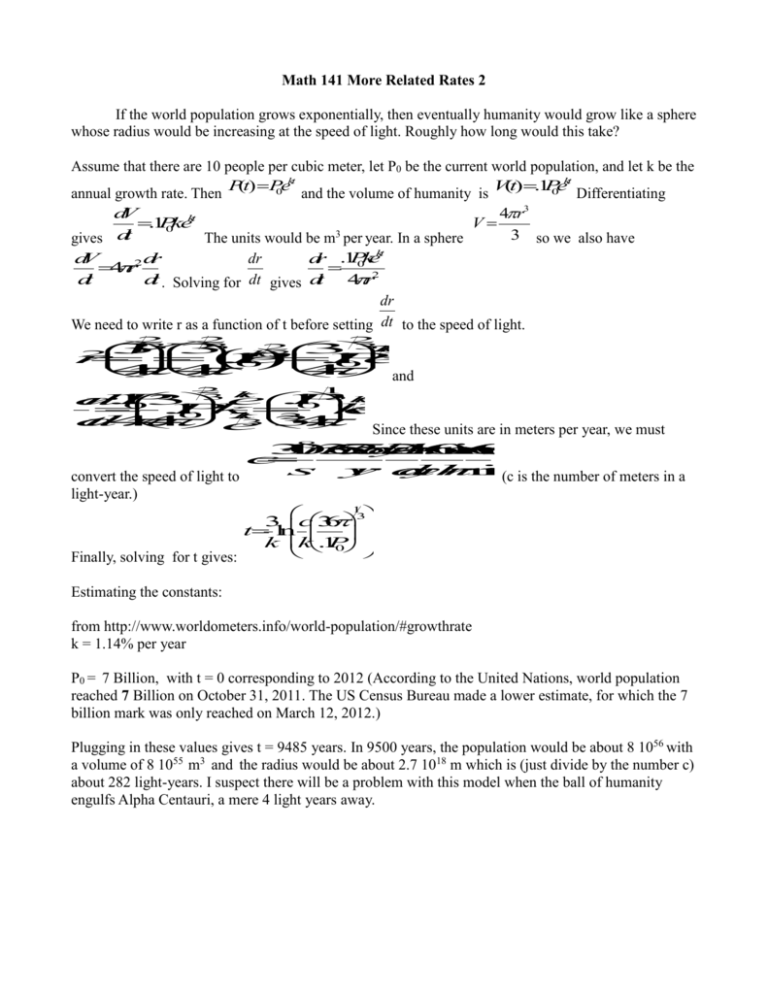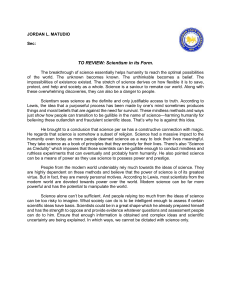Microsoft word version
advertisement

Math 141 More Related Rates 2 If the world population grows exponentially, then eventually humanity would grow like a sphere whose radius would be increasing at the speed of light. Roughly how long would this take? Assume that there are 10 people per cubic meter, let P0 be the current world population, and let k be the kt kt ( ) Pe ( ).1P 0 0e Differentiating annual growth rate. Then Pt and the volume of humanity is Vt dV 4r3 kt .1P ke V 0 3 so we also have gives dt The units would be m3 per year. In a sphere kekt dr .1P dV dr dr 0 2 4r2 4r dt dt . Solving for dt gives dt dr We need to write r as a function of t before setting dt to the speed of light. 2 2 2 3 3 2 33 2 k t 3 V 3 k t3 3 r . 1 P e . 1 P e 0 0 4 4 4 and 2 2 1 t 3k 3 k t . 1 P . 1 P d r 3 e 0 0 3 . 1 P k k e 0 2 k t 2 3 d t4 4 3 4 e Since these units are in meters per year, we must 8 3 1 0 m 3 6 5 . 2 5 d a y 2 4 h r 6 0 m i n 6 0 s c s y r d a yh rm i n convert the speed of light to (c is the number of meters in a light-year.) 3 c3 6 3 t ln k k.1 P 0 Finally, solving for t gives: 1 Estimating the constants: from http://www.worldometers.info/world-population/#growthrate k = 1.14% per year P0 = 7 Billion, with t = 0 corresponding to 2012 (According to the United Nations, world population reached 7 Billion on October 31, 2011. The US Census Bureau made a lower estimate, for which the 7 billion mark was only reached on March 12, 2012.) Plugging in these values gives t = 9485 years. In 9500 years, the population would be about 8 1056 with a volume of 8 1055 m3 and the radius would be about 2.7 1018 m which is (just divide by the number c) about 282 light-years. I suspect there will be a problem with this model when the ball of humanity engulfs Alpha Centauri, a mere 4 light years away.











